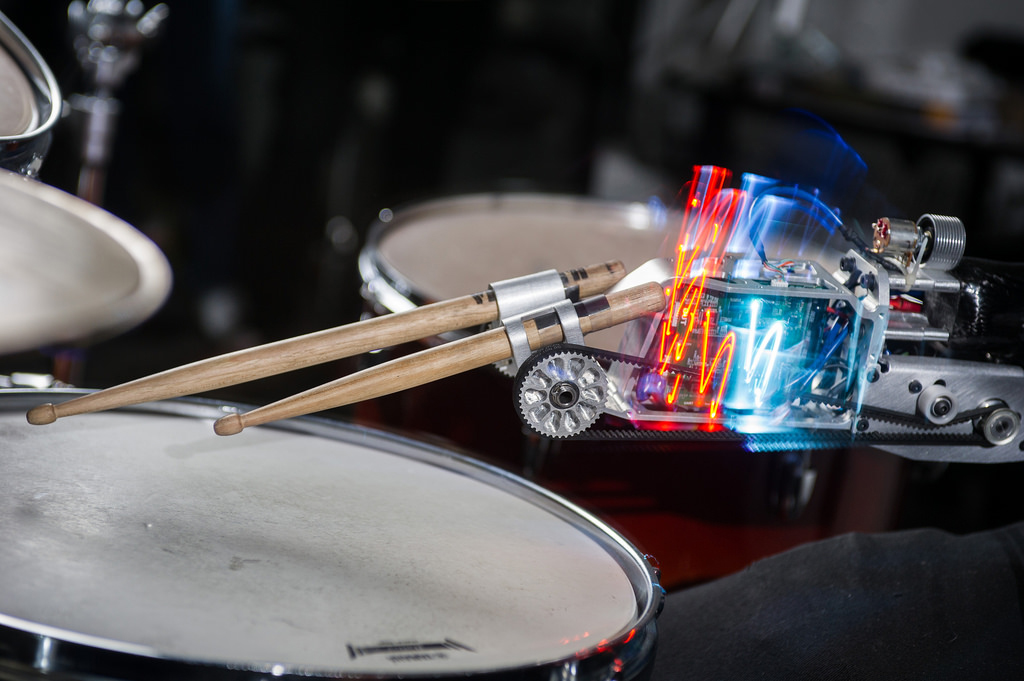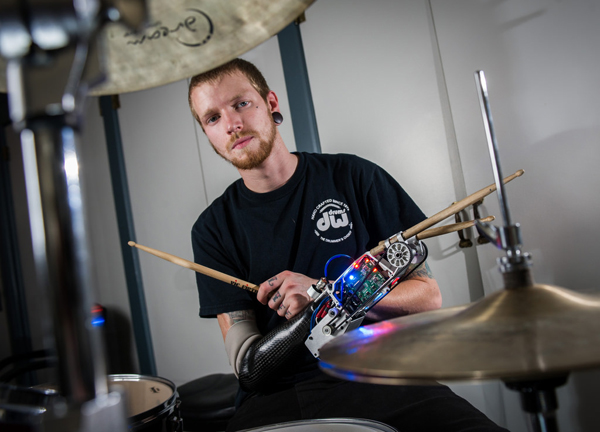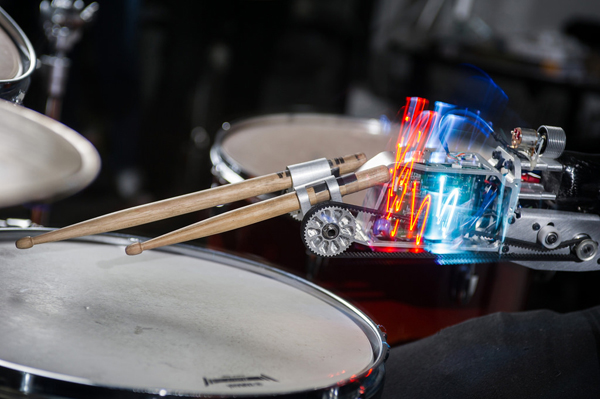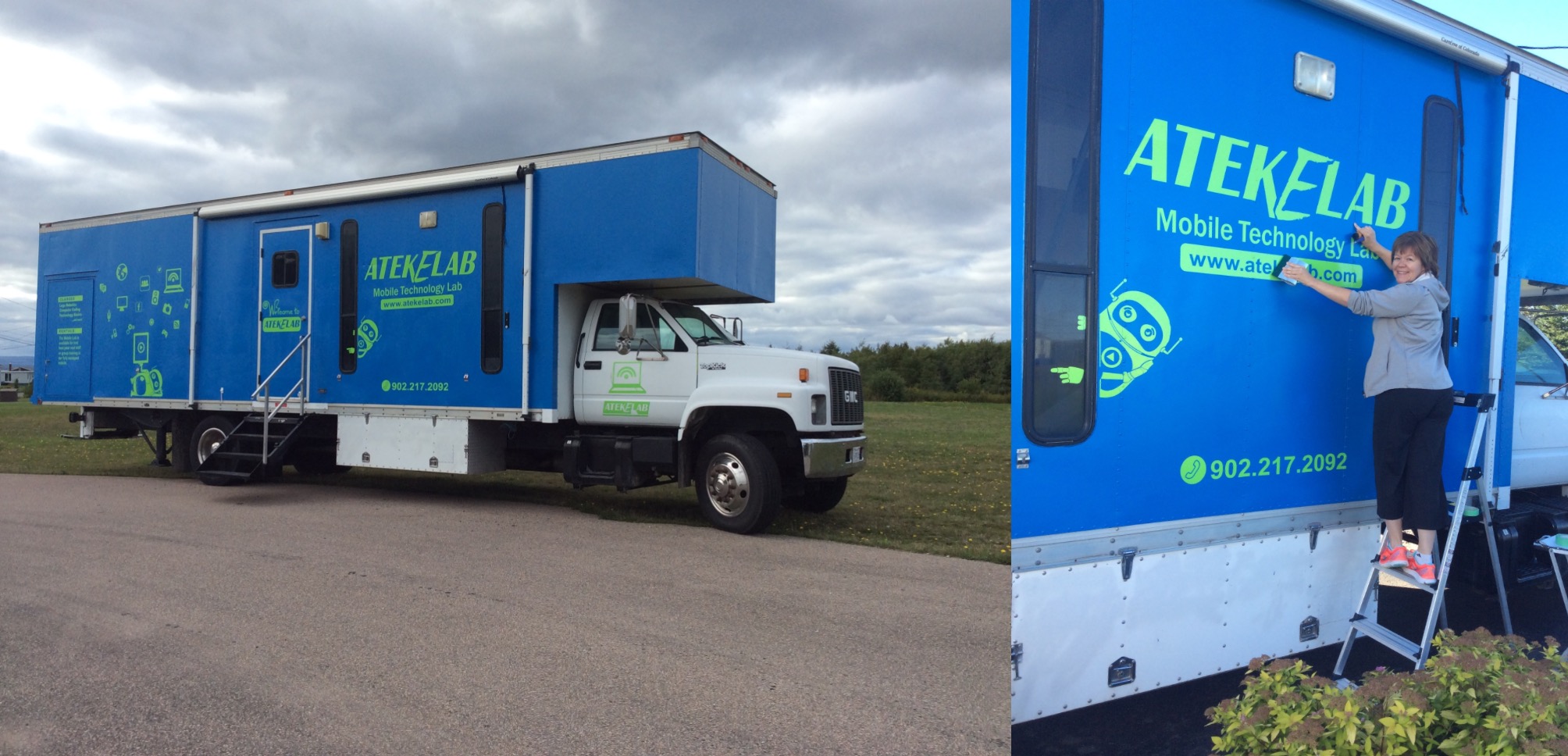Some people struggle with a career choice, but Jason Barnes always knew that he wanted to be a drummer. He applied to the school where many of his idols went, the Atlanta Institute of Music and Media, and saved up his tuition by cleaning out the rooftop ventilation systems of restaurants.
Three days before his school audition he was electrocuted when a nearby transformer made contact with his rooftop cleaning equipment, badly burning him and eventually forcing doctors to amputate his right arm below the elbow.
When drum instructor Eric Saunders discovered that Barnes had started building a makeshift arm while still in his hospital bed, he connected Jason with Professor Gil Weinberg at the Georgia Institute of Technology, a leading expert in exploring the possibilities of robotics in music. Together they assembled an arm that uses motors within the forearm to power two drumstricks.
The first is controlled by Jason’s bicep, where flexing adjusts his grip for fine control. The second is robotic, performing by itself, but using a microphone to listen to Jason’s playing and respond with complimentary movements. With a total of three drumsticks, Jason can perform drum rolls and routines not possible by other drummers.
“The second drumstick has a mind of its own,” says Prof. Weinberg. “The drummer essentially becomes a cyborg. It’s interesting to see him playing and improvising with part of his arm that he doesn’t totally control.”
Computers make for poor musicians. They can play and even write music, but lack that expressive spark only humans can add. Weinberg’s research is about exploring ways that robotics can be combined with the performances of human musicians.
“Music is very time sensitive. You can hear the difference between two strokes, even if they are a few milliseconds apart,” explains Weinberg. “If we are able to use machine learning from Jason’s muscles (and in future steps, from his brain activity) to determine when he intends to drum and have the stick hit at that moment, both arms can be synchronized.”
This goes beyond simply giving an amputee back their lost ability or creating cool artificial limbs that can overcome their traditional stigma, Jason’s bionic arm will give him superhuman ability. His right arm can play its two sticks using independent rhythms and perform faster than any other living drummer.
“Never did I think that there would be a robotic drum arm“ gushes Jason Barnes, clearly bemused by it all. “I’ll bet a lot of metal drummers might be jealous of what I can do now. Speed is good. Faster is always better.”
As time marches on and other drummers have to deal with old age, where their reflexes slow down or arthritis sets into their joints, at age 80 Jason will be able to drum as fast and consistently as he can today. In fact, because his right arm can be replaced and upgraded, he’ll only get better.
Although Weinberg’s work at Georgia Tech is about developing robotics for all musicians, including those with all their limbs intact, Jason’s story is a vanguard, one of the first to represent a major change within our society. He is among a new generation that is discovering that bionics can make life more interesting. Getting an artificial limb is no longer just about recovering that which was lost, but in gaining an opportunity to transform themselves.
You can listen to my radio series live every Monday on Moore in the Morning at 6:45 am






